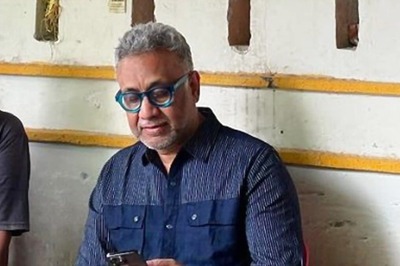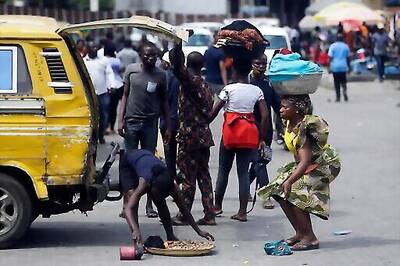
views
The security forces achieved a huge success in their campaign against the Left-wing extremists in the Gadchiroli district of Maharashtra on November 13, when the C-60 commandos of the state police, after a ten-hour gun-battle near Mardintola village in the Dhanora taluka, liquidated 24 Maoists.
Those killed included Milind Teltumbde, a central committee member of the party who carried a reward of Rs 50 lakh over his head. Four security forces personnel also sustained injuries during the encounter. The police recovered a sizeable cache of arms and ammunition including five AK-47 rifles, one under-barrel grenade launcher (UBGL), nine SLRs, three .303 rifles, one INSAS rifle, one pistol and explosives.
These losses would mean a huge setback to the Maoists. It may be recalled that in 2018 also, in the encounters on April 22-23, the Maoists had suffered a loss of 37 lives at the hands of C-60 commandos and the CRPF in the Etapalli tehsil of Gadchiroli district.
However, it must be acknowledged that the Maoists have also been launching lethal attacks and inflicting heavy casualties on the security forces.
On 1 May 2019, 15 personnel of the C-60 Commando unit of Maharashtra Police and one civilian driver were killed in an ambush by the Maoists in Jamburkheda village of Gadchiroli district. Elsewhere, in Chhattisgarh, the PLGA (People’s Liberation Guerilla Army) ambushed a strong contingent comprising men drawn from the COBRA unit of CRPF, a unit of Bastariya Battalion and the District Reserve Guard, on April 3, 2021 and killed 22 security forces personnel in Sukma district.
It has been a see-saw battle with the balance steadily tilting in favour of the security forces. According to the South Asia Terrorism Portal, the overall fatalities which had peaked in 2010 at 1,179 (630 civilians, 267 SF personnel, 264 Maoists, 18 not specified) dropped to 239 (61 civilians, 44 SF personnel, 134 Maoists) in 2020. The geographical influence of the CPI (Maoist) has also, according to the Ministry of Home Affairs, shrunk to 41 districts in the country from 96 districts in 10 states in 2010.
The Maoist challenge nevertheless remains formidable.
According to an estimate, Maoists’ ‘liberated’ area today is about 10,000 sq km. Out of this, about 3,000 km is beyond the control of the government while there are varying degrees of control in the rest of the area, where food supplies and medicines could be sent and teachers could go, but the police and development officers do not venture. The IGP Bastar Range, in a statement, made on June 5, 2021, conceded that the Maoists are having a free run in their inaccessible stronghold of Abujhmad in Narayanpur and the other affected regions of Chhattisgarh.
Maharashtra has more than 80 frontal organisations of the Maoists, particularly in the districts of Nagpur, Nashik, Pune and Mumbai, and it is learnt that the state government is finding it difficult to tackle their activities. Central committee member Teltumbde, who was killed in the encounter, was also secretary of the CPI (Maoist) Maharashtra State Committee and was an accused wanted by the NIA and Pune police in the Bhima Koregaon Elgar Parishad case of 2018. The Maharashtra government, apart from building operational pressure on the Maoists, recently on September 7, 2021 extended its ‘Surrender Policy’ for another two years to wean away the fence-sitters.
The Minister of State for Home Affairs, Nityanand Rai, informed Parliament on July 28, 2021 that there had been 195 instances of Left-wing extremists targeting installations of economic interest since 2018. It needs no emphasis that the Maoist insurgency is affecting the overall development process in the country.
There is an impression in the Government of India that it will be able to crush the Maoist movement in the country within the next couple of years. They need to get over this illusion. Twice before in the past, the government made this mistake, the first time after the death of Charu Mazumdar in 1972 and a second time after decimating the People’s War Group and arresting its leader Kondapalli Seetharamaiah in 1993.
Every time the movement resurrected—and in a more virulent form.
It happened because the underlying socio-economic factors which had given rise to the movement and continue to provide sustenance to it were not addressed. The situation remains more or less the same today. A survey conducted recently by the Government of India showed that the richest 10 per cent of Indians own half of the country’s physical and financial assets, while the bottom 50 per cent own less than 10 per cent.
An Expert Group appointed by the Planning Commission in 2008 had recorded that “the development paradigm pursued since Independence has aggravated the prevailing discontent among marginalised sections of society”. There has been no effort since then to re-examine this paradigm and we have been blindly following the Western model of economic development.
The government is presently following what is called a ‘National Policy and Action Plan’ which involves a multi-pronged strategy in respect of security, development and ensuring the rights and entitlements of local communities. It should now seriously think of inviting the Maoist leadership for peace talks.
The Government of India has been negotiating with multiple insurgent groups in the Northeast and coming to some agreement with quite a few of them. There is no reason why a similar peace dialogue cannot be held with the Maoists. The government is today in a position of strength and, therefore, any offer of peace talks would be considered magnanimous and may be responded to favourably by the hard-pressed and ageing Maoist leadership.
There has been too much blood-letting during the last more than 50 years of the Naxal movement in the country. Innocent lives have been lost, security forces personnel have been killed fighting a battle against their own people. It is not a happy situation. The sooner this tragic chapter ends, the better it would be for the country.
The writer is a former Director-General of Border Security Force. The views expressed in this article are those of the author and do not represent the stand of this publication.
Read all the Latest Opinions here


















Comments
0 comment